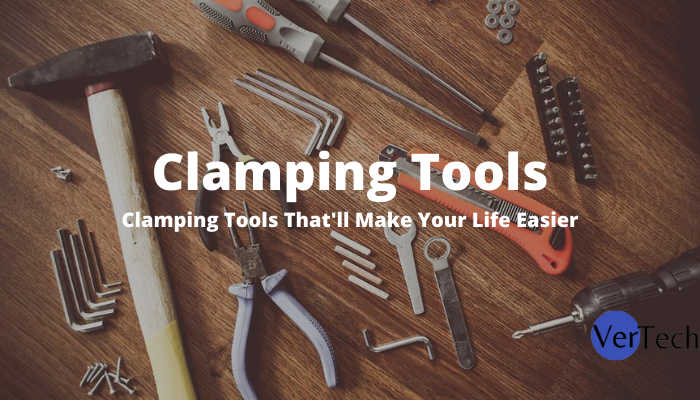Industrial
Clamping Tools That’ll Make Your Life Easier

Tools that help you clamp can be a useful addition to your workshop, helping you clamp pieces together more easily. There are many different types of clamping tools available, but the three most common are panel clamps, parallel jawed locking clamps, and bench dogs. Each of these has its own uses, and each can help you work more efficiently.
For clamping smaller pieces, such as when assembling carcass components or building drawers and cabinets, panel clamps are the most effective choice. They’re also ideal if you have limited bench space as they take up less room than other clamping tools. With so many different options available, here is everything you need to know about affordable clamping tools.
Panel Clamp
A panel clamp is a wood clamping tool that is designed to be fixed onto the edge of a workpiece for gluing or holding pieces together. As opposed to most other clamps, panel clamps usually come with lever mechanisms which make it easier to apply pressure and hold pieces in place.
T-Style
T-style clamps are another type of panel clamp, which is generally used to hold the edges of panels together while they are being glued. In case you need to clamp just one side of the workpiece, a left-handed T-style clamp can be used.
Parallel jaw locking clamps
Parallel jaw locking clamps are another useful tool for keeping your workpieces in place. These are widely used in factories and workshops because of their strength and simple design. In order to apply pressure and clamp pieces together, they usually come with two handles, each attached to a different jaw. These clamps can either be adjustable or fixed.
One common problem with clamping tools is that some people find it difficult to apply pressure with them. Therefore, it is important that you learn how to use them effectively so that you don’t end up damaging your work pieces.
Here are some tips that can help you to use clamping tools more efficiently:
i. Apply a little pressure at the beginning – This will help to prevent over-tightening your clamps as it will take some time for the clamps to fully open and start applying pressure.
ii. Hold your workpieces firmly – This can help to stop the clamping tool from slipping as it will take some time for the clamps to fully open.
iii. Use a pencil to get a rough idea of how far you can open the clamp – This will help you to get a better idea of how much pressure to apply.
iv. Hold your workpiece firmly at the back – When using clamps, it is important that they remain in contact with your workpiece at all times as this will stop them from slipping and allow you to apply pressure easier.
v. Press towards the bottom of the clamp – This will prevent you from over-tightening your clamps as it will take some time for this to happen.
With so many different types of clamping tools available, there is one for almost every situation and situation. However, it’s important that you choose the best clamping tool that suits your needs.
There are many different types of clamping tools available, including panel clamps, parallel jaw locking clamps, and bench dogs. Each of these has its own uses and is ideal if you have limited bench space as they take up less room than other clamping tools. As well as this, there’s also a combination tool that has both a clamp and a ruler combined in one item, which can be used to measure the size of your workpieces.
-
Blog1 year ago
MyCSULB: Login to CSULB Student and Employee Portal – MyCSULB 2023
-
Android App3 years ago
Cqatest App What is It
-
Android1 year ago
What Is content://com.android.browser.home/ All About in 2023? Set Up content com android browser home
-
Software2 years ago
A Guide For Better Cybersecurity & Data Protection For Your Devices
-
Latest News2 years ago
Soap2day Similar Sites And Alternatives To Watch Free Movies
-
Android2 years ago
What is OMACP And How To Remove It? Easy Guide OMACP 2022
-
Android3 years ago
What is org.codeaurora.snapcam?
-
Business2 years ago
Know Your Business (KYB) Process – Critical Component For Partnerships






















